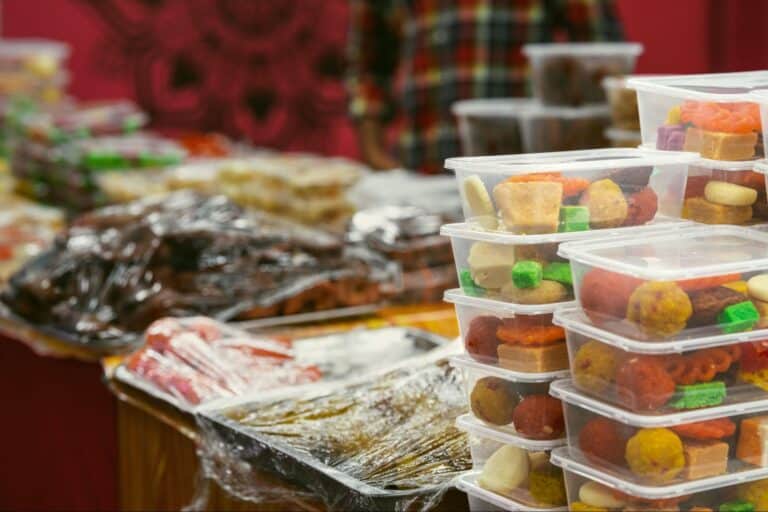
Custom Injection Molding Solutions for Every Industry
In today’s dynamic manufacturing world, finding a production method that is both efficient and adaptable is crucial for meeting unique customer demands. Custom injection molding
DISCOVER OUR NEWLY RELEASED COLLECTIBLE DISPLAY CASES! SHOP NOW
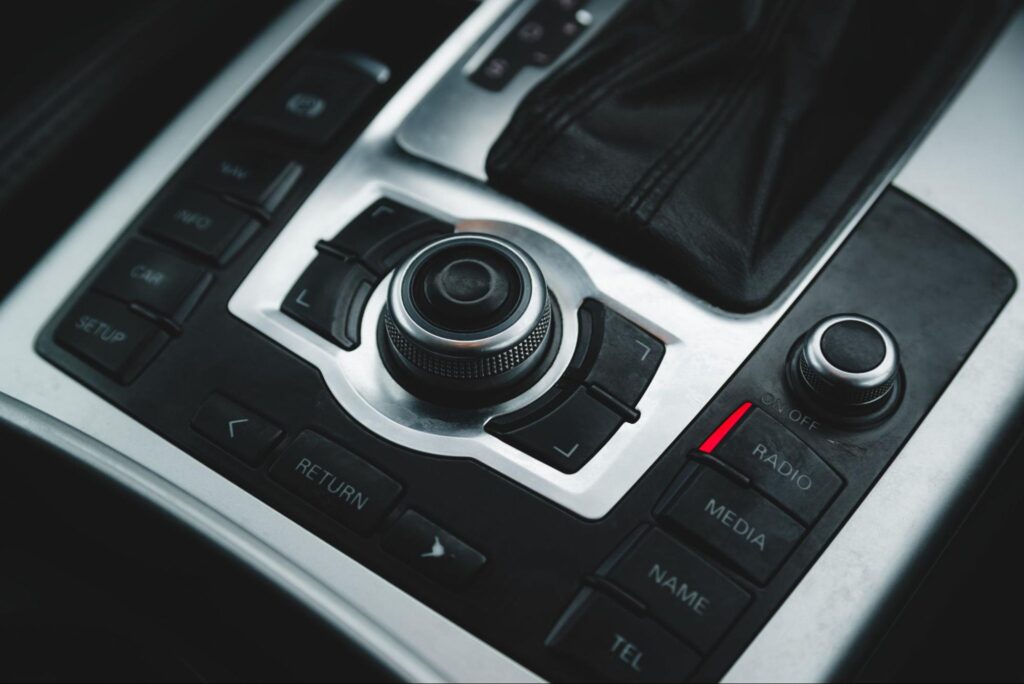
Plastic overmolding is a modern manufacturing technique where a softer, flexible polymer is molded over a rigid base material, bonding them into a single, high-performance component. Unlike methods where parts are assembled later, overmolding creates a unified piece that integrates the benefits of each material, such as adding a flexible grip to a hard plastic handle. The result is a seamless final product with enhanced durability and a premium feel.
This innovative process is essential in the automotive, medical, and electronics industries, where user comfort and reliability are critical. By using advanced materials for shock absorption and grip, manufacturers can create custom, visually appealing solutions that simplify production. Below, we’ll explore how this technique delivers superior products while reducing manufacturing complexity.
Plastic overmolding offers several significant benefits to both manufacturers and end-users:
Through these combined benefits, plastic overmolding continues to shape the design and development of modern products by balancing performance, comfort, and cost-efficiency.
A successful overmolded component is the result of a disciplined, end-to-end manufacturing process where every stage builds upon the last. From the initial choice of materials to the final validation of the finished part, this playbook outlines the critical steps required to achieve a durable, high-performance product.
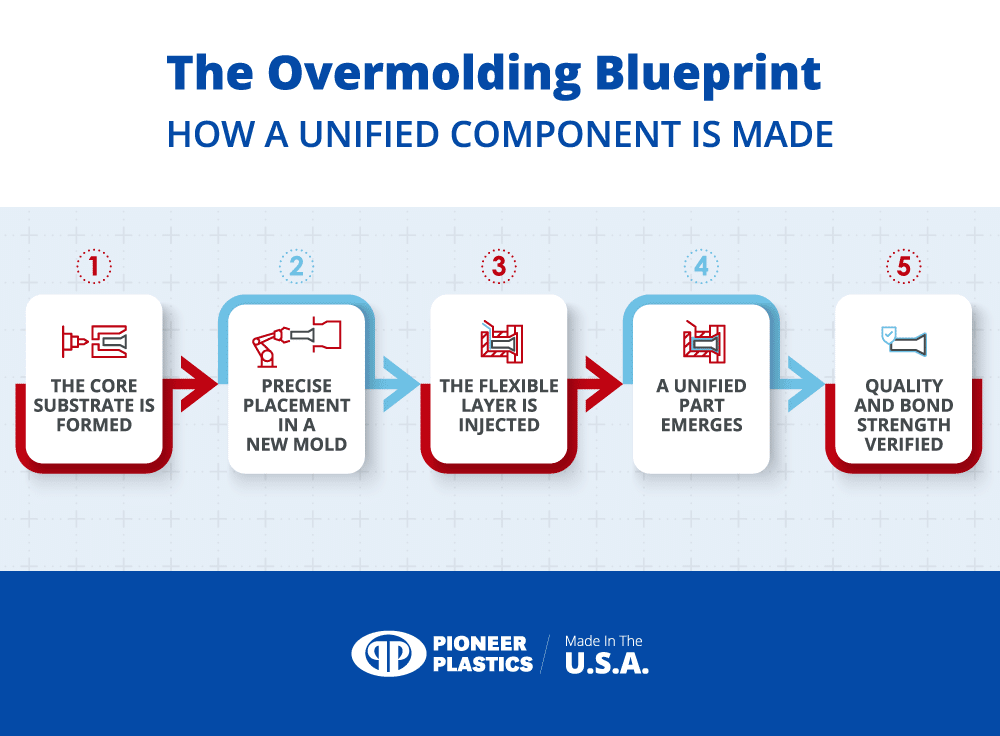
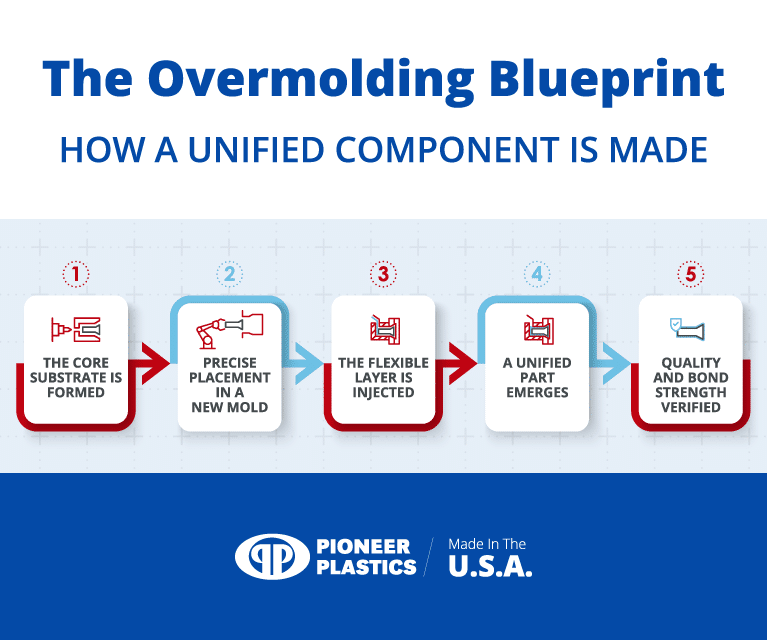
The foundation of any overmolding project is the selection of compatible materials. The choice of both the rigid substrate (the base) and the flexible overmold dictates the final product’s performance, feel, and durability. The success of the entire project hinges on ensuring these materials form a strong chemical or mechanical bond.
Common Material Combinations:
Incorrectly matched materials can lead to weak bonds, causing the layers to peel or separate over time. A proper selection process considers not only the physical bond but also the end-use environment, anticipating challenges like extreme temperatures, chemical exposure, or UV radiation.
Once materials are selected, they move through a precise, multi-stage production cycle designed for consistency and quality.
The process does not end when the part leaves the mold. To guarantee that each component meets demanding performance standards, it must undergo a series of stringent quality checks and validation tests.
To verify performance and durability, finished components undergo a battery of specific tests:
Beyond mechanical testing, quality assurance teams also monitor for aesthetic and dimensional consistency, including color matching, surface finish, and adherence to tight tolerances. This comprehensive approach ensures that every part is not only strong and durable but also meets the precise functional and brand requirements of the final product.
Overmolding is a cornerstone technology in industries where performance, durability, and user experience are paramount. By moving beyond theory and looking at specific components, its true value becomes clear.
In the demanding automotive environment, overmolding is used to create integrated components that enhance safety, comfort, and longevity. Specific applications include:
For medical devices, overmolding is critical for creating hygienic, precise, and ergonomic tools that meet stringent clinical standards. Specific applications include:
In electronics, overmolding provides robust protection against mechanical stress and environmental hazards, extending the lifespan of consumer and industrial devices. Specific applications include:

Harnessing the full potential of plastic overmolding requires careful planning and strategic decision-making. While the technology offers significant advantages, a successful outcome depends on balancing design, materials, and manufacturing realities. Before launching a project, it’s essential to address the following key considerations.
The single most critical factor is ensuring the substrate and overmold materials are compatible. A weak chemical or mechanical bond will lead to delamination, cracking, and premature product failure.
An optimized design is the blueprint for a successful part. Collaborating with experienced engineers early in the process is crucial to avoid costly mistakes.
Overmolding requires a significant upfront investment in precision tooling. This cost must be weighed against the long-term savings.
Achieving a perfect bond is a science. The manufacturing process demands precise control over every variable to prevent defects.
By carefully evaluating these factors, businesses can mitigate risks and make informed decisions. A well-planned overmolding project, guided by engineering expertise, will deliver a superior product that is durable, functional, and cost-effective over its entire lifespan.
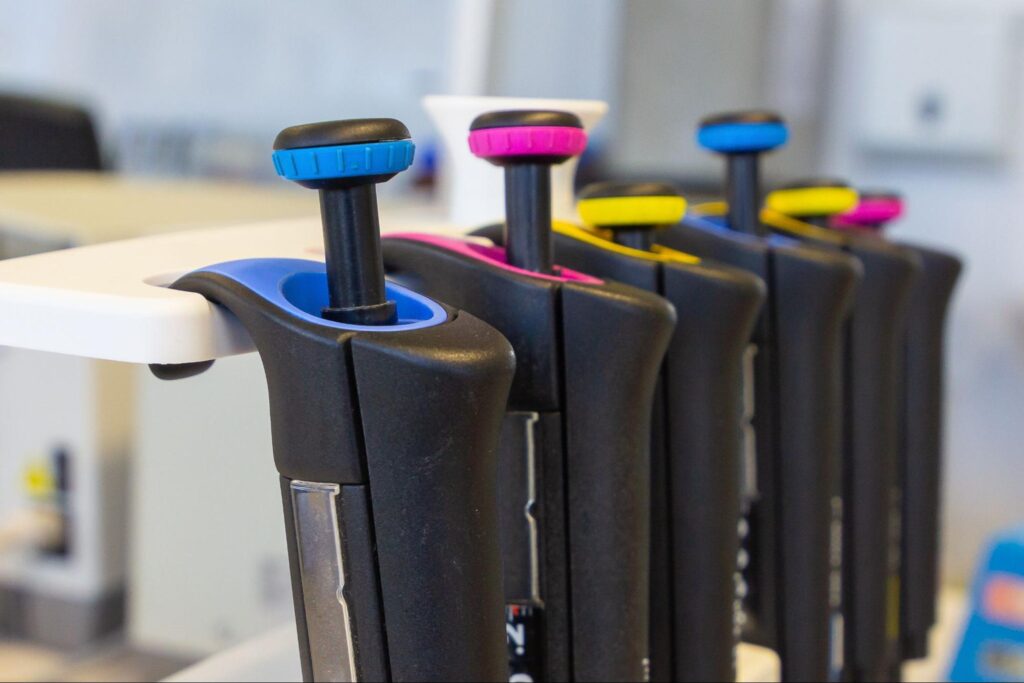
The evolution of plastic overmolding is being shaped by powerful forces that are not only refining the process but also expanding the boundaries of what is possible in product design.
A major driver of innovation is the growing demand for environmental responsibility. Manufacturers are increasingly adopting eco-conscious practices by selecting recyclable or partially recycled resins and optimizing production to reduce energy consumption and material waste. This focus on sustainability aligns with evolving regulations and consumer values, positioning overmolding as a key technology for creating products within a more circular economy.
Simultaneously, the integration of advanced technology is making the overmolding process smarter and more efficient. The modern factory floor leverages automation and real-time data, with advanced sensors monitoring every parameter—from temperature to pressure—to prevent defects. Robotics streamline substrate loading and part ejection to boost yield rates, while powerful computer simulations allow engineers to perfect mold design digitally, minimizing trial-and-error and accelerating time-to-market.
These trends converge to open up new frontiers. Advancements in material science are yielding tougher thermoplastics and specialized elastomer blends, enabling the creation of lighter, more durable components. This is critical in the automotive industry, where reducing weight is key to extending the range of electric vehicles. Similarly, as the Internet of Things (IoT) expands, the need for robust, sealed enclosures to protect sensitive electronic sensors will grow, making overmolding the ideal solution for creating the next generation of smart, connected devices.
Turning an overmolding concept into a reliable, high-quality component requires a partner with deep manufacturing expertise. With over 40 years of experience, Pioneer Plastics is more than a vendor; we are a collaborative partner dedicated to your project’s success. Our end-to-end approach navigates the key challenges of overmolding to ensure your final product meets the highest standards. Our partnership provides:
At Pioneer Plastics, we build solutions, not just parts. We combine decades of hands-on experience with a commitment to quality, helping you innovate with confidence and turn demanding concepts into market-ready realities.
Plastic overmolding is a transformative technology that fuses diverse materials—combining rigid substrates with flexible overlays—into a single, high-performing component. Overmolding has become a vital method for improving product durability and usability. Its ability to integrate multiple materials into innovative, streamlined designs enables manufacturers to meet strict industry requirements while delivering products that excel in functionality, aesthetics, and cost-effectiveness.
Pioneer Plastics brings over 40 years of experience inhelping companies implement overmolding solutions that fulfill both technical and commercial goals. Interested in harnessing the benefits of custom overmolding? Contact Pioneer Plastics to see how we can help you innovate, streamline production, and elevate your product’s market appeal.
The information provided in this content is for general informational purposes only and should not be considered professional advice. It is advisable to consult with a qualified industry professional before taking any action based on this information. The team at Pioneer Plastics is here to assist you with any questions you may have.

In today’s dynamic manufacturing world, finding a production method that is both efficient and adaptable is crucial for meeting unique customer demands. Custom injection molding
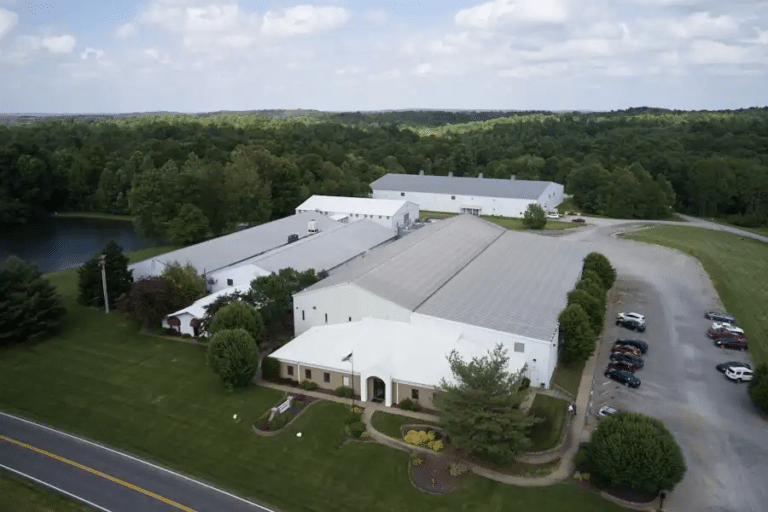
Want to bring your custom injection molding back to the United States? Read on to learn more about reshoring your supply chain back to the US.
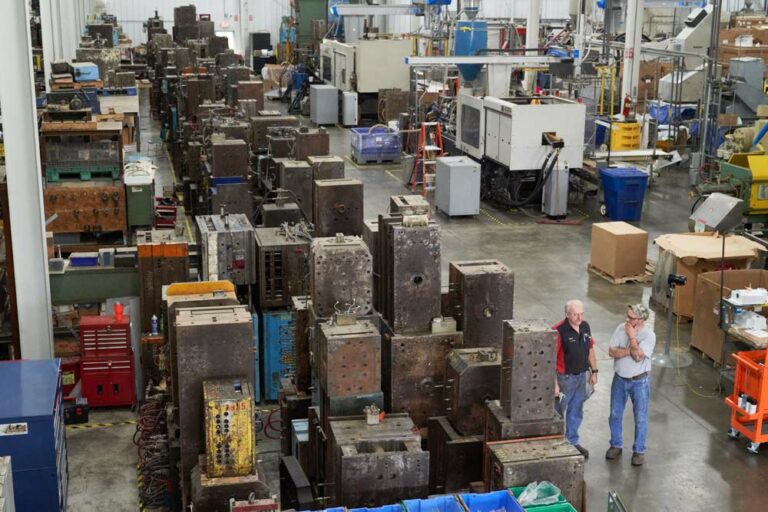
When we hold plastic parts in our hands, we usually aren’t thinking of how it was manufactured or what machines were used in the process.